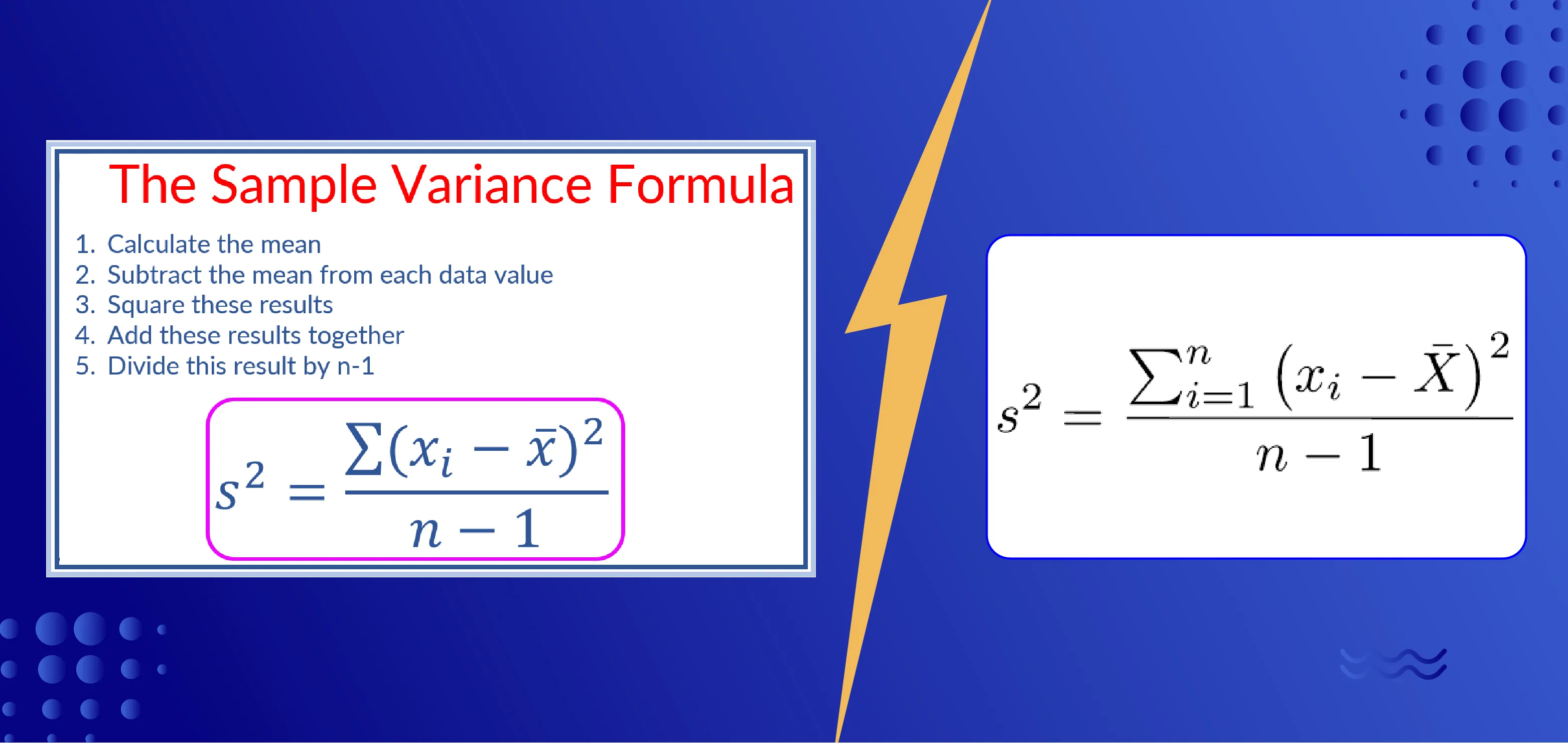Calculate Sample Variance Assignment Help
Sample variance is a statistical measure used to determine the amount of variability or dispersion within a dataset. It provides valuable information about the spread of data points around the mean with the expertise of academic writing help. Calculating the sample variance involves several steps:
- Determine the mean: Calculate the arithmetic mean (average) of the dataset by summing all the values and dividing by the total number of observations.
- Find the difference: For each data point, subtract the mean from the value. This step captures the deviation of each data point from the mean.
- Square the differences: Square each deviation obtained in the previous step. This is done to ensure that negative and positive deviations don't cancel each other out.
- Sum the squared differences: Add up all the squared differences obtained in the previous step.
- Divide by (n-1): Divide the sum of squared differences by the total number of observations minus one (n-1). This is known as Bessel's correction and helps to provide an unbiased estimate of the population variance based on the sample.
Importance of Sample Variance?
Sample variance is an important statistical measure that provides valuable insights into the variability or dispersion of data within a sample. Here are some reasons highlighting the importance of sample variance:
- Describing Data Spread: Sample variance quantifies the spread or dispersion of data points around the mean, giving a numerical measure of deviation from the average. This information is critical in understanding dataset values and variability with academic guidance.
- Comparing Data Sets: Sample variance allows for comparisons between different datasets. By calculating and comparing the variances of multiple samples, researchers can determine which dataset exhibits more variability. This can be useful for making informed decisions, identifying patterns, or detecting outliers.
- Assessing Data Quality: Sample variance helps in assessing the quality and reliability of data. A low variance indicates that the data points are relatively close to the mean, suggesting a high degree of consistency and precision. Conversely, a high variance suggests a greater dispersion, indicating potential inconsistencies or variations within the dataset.
- Decision Making and Inference: Sample variance plays an important role in statistical inference. It's used in hypothesis testing, confidence intervals, and regression analysis. These statistical techniques rely on sample variation to make inferences about population parameters and draw conclusions about relationships between variables. With the help of definition essay assignments, students understand the importance of sample variation in statistics.
- Research and Data Analysis: In various fields, such as social sciences, finance, engineering, and economics, sample variance is essential for conducting research and analyzing data. It helps researchers understand the characteristics of a dataset, identify trends, and draw meaningful conclusions from the collected data.
Sample Variance Calculation Methods?
There are different methods for calculating sample variance, each with its own advantages and considerations. Here are two commonly used methods:
- The Sum of Squares Method: This method involves several steps. First, calculate the mean of the dataset by adding up all the values and dividing by the total number of observations. Then, for each data point, subtract the mean and square the result. Sum all the square differences with the support of online assignment help. Lastly, divide the sum by (n-1), where n represents the number of observations. This method, also known as a "computational formula", provides an unbiased estimate of population variation based on the sample.
- The Two-Pass Method: This method involves calculating the sum of squares of differences from the mean in a two-pass process. In the first pass, calculate the mean of the dataset. In the second pass, calculate the sum of the squared differences from the mean. Then, divide the sum by (n-1) to obtain the sample variance. This method is useful when dealing with large datasets or situations where memory constraints limit the ability to store individual class differences. With the help of assignment help online, students can navigate these steps effectively.
How Does BookMyEssay Explain Sample Variance Calculation?
BookMyEssay, as an academic writing platform, can provide assistance in explaining sample variance calculation through various means with including the provision of sample proposal essay examples. These examples can serve as helpful resources for students to understand and grasp the concept of sample variance calculation.
When explaining sample variance by BookMyEssay you will likely be presented with a clear and concise definition of sample variance as a statistical measure that quantifies the variability within a dataset. This will emphasize that sample variance is calculated by analyzing the squared deviation of individual data points from the mean.
To illustrate the calculation process, BookMyEssay may offer a step-by-step explanation using a practical example from a sample proposal essay. By applying the concept to real-world scenarios, the platform can help students relate the calculation to a context they are familiar with.
BookMyEssay might utilize graphs or visual aids to enhance the understanding of sample variance calculation. Visual representations can show the dispersion of data points around the mean and highlight the importance of calculating variances to assess the spread of the data.
By providing sample proposal essay examples and utilizing clear explanations, BookMyEssay aims to assist students in comprehending the intricacies of sample variance calculation. This helps students develop their statistical analysis skills and apply them effectively in their academic writing and research endeavors.








 3 Bellbridge Dr, Hoppers Crossing, Melbourne VIC 3029
3 Bellbridge Dr, Hoppers Crossing, Melbourne VIC 3029



